Travelers are tired of cold, uninspiring airport terminals, and airport operators are under pressure to slash their carbon emissions. Mass timber, an engineered wood that is stronger, more stable and more fire-resistant compared to traditional lumber, offers a solution to both problems—but only if you know how to use it right. Incorporating mass timber in these projects requires thoughtful planning.
In Central California, the new five-gate terminal at Monterey Regional Airport, designed by HOK, offers a blueprint for how to do it right. I recently served as a panelist at Swinerton and Timberlab’s Timber Talks event, sharing Monterey’s story of creating the new airport terminal with mass timber. From the project’s material choices to code navigation, here are key lessons for anyone considering mass timber in airport architecture.
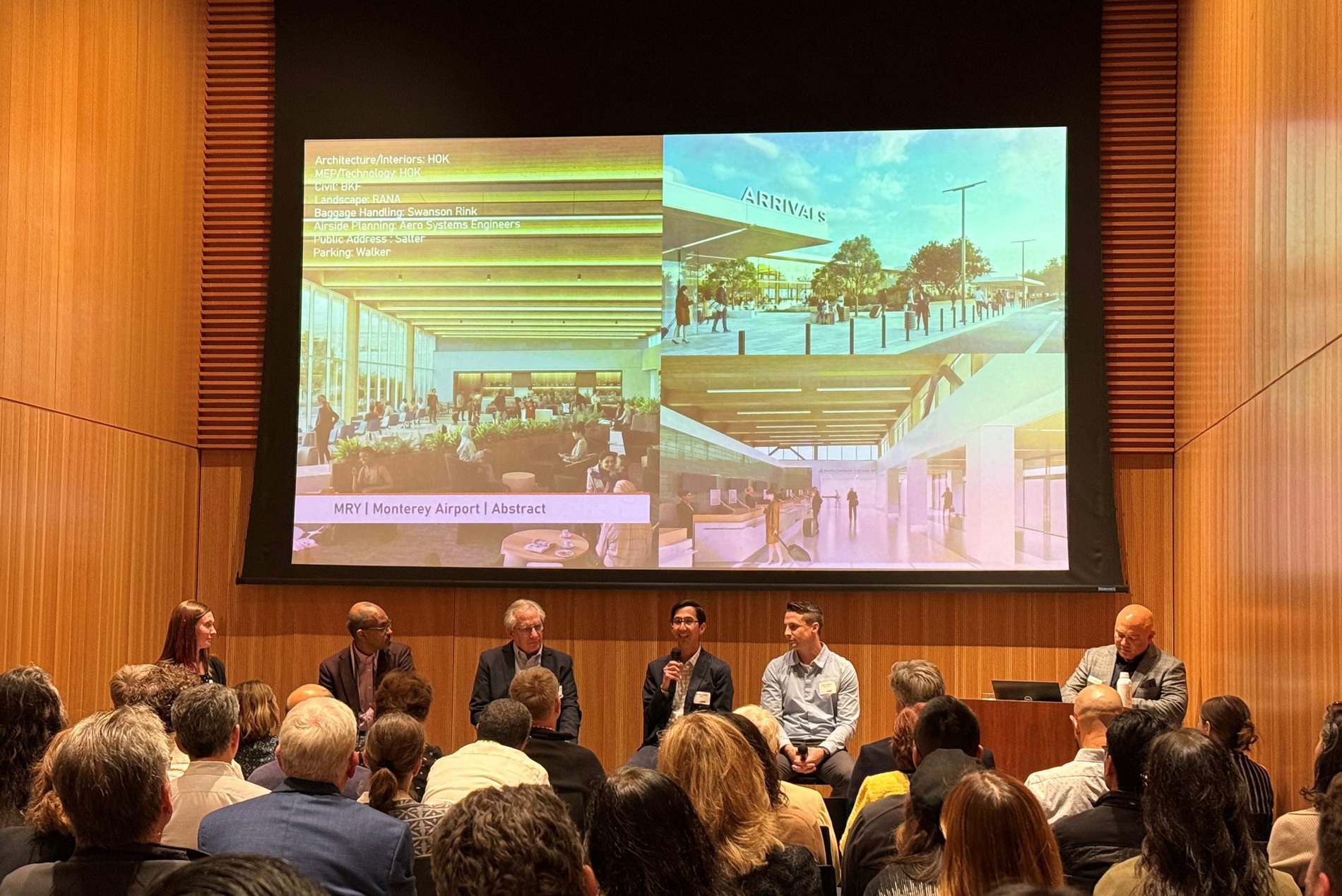
1. It Starts with Sustainability
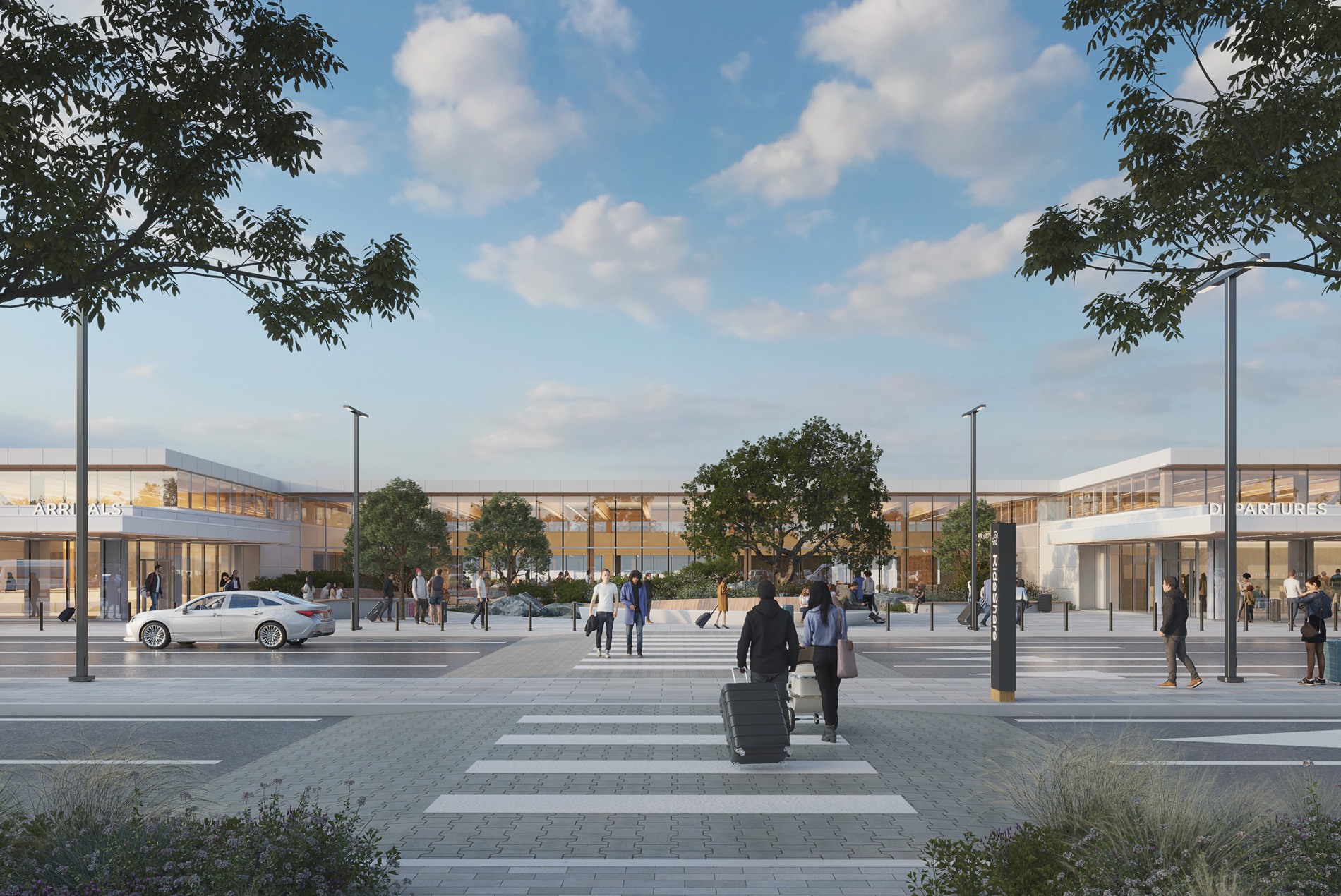
Mass timber is a great option for reducing embodied carbon and supporting long-term environmental goals.
In Monterey, the new 60,000-sq.-ft. terminal shown above is going all in on sustainability. The airport is targeting LEED Platinum and is designed to be net-zero energy ready. They’re setting a high bar for what a regional airport can achieve with sustainable design.
The mass timber design is a key factor in helping the airport reach these goals. Advanced building systems, expansive windows and a high-performance building envelope also optimize construction and maintenance costs.
2. Understand the Code Early
Before you start sketching timber roofs, understand your area’s building codes. Designing airports to meet code requires smart coordination between owners and designers from day one.
In Monterey, early visioning sessions with the client helped HOK determine the design should be beautiful, functional, sustainable and connect travelers to nature. Our team worked closely with the client and code officials to make mass timber a prominent piece of the new airport. We evaluated the potential materials to be used for the building construction, carefully analyzing allowable building heights, areas and occupancies early in the project process.
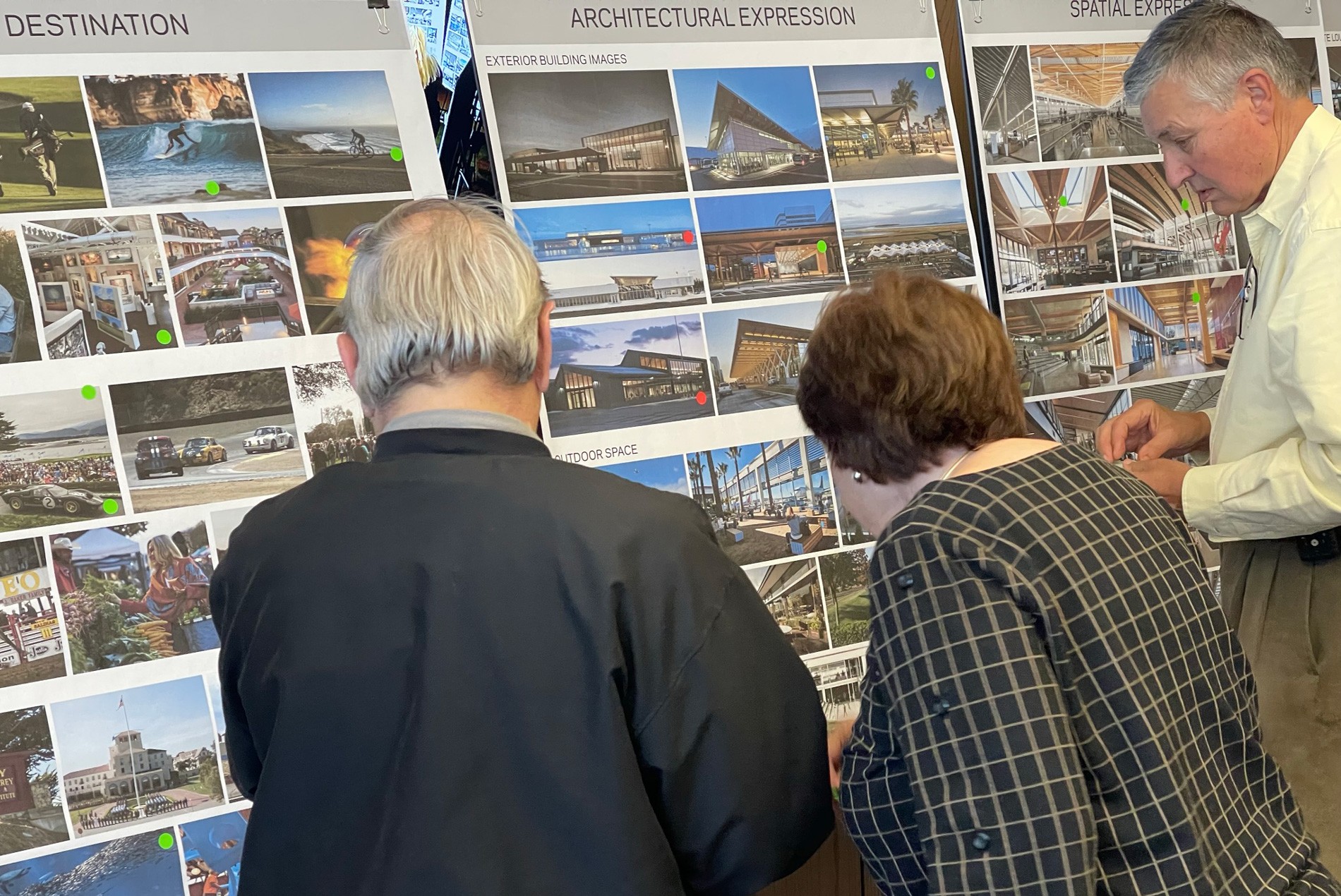
HOK selected a Type IIA classification, typically used for fire-resistant buildings made of steel or concrete, which allowed us to incorporate a heavy timber roof into the new airport terminal. Starting the code conversation early can unlock creative solutions like Monterey’s that still meet safety requirements.
3. Tell a Local Story Through Design
Another benefit of mass timber is how it can help connect a building to its setting. This material can help reflect a local identity, landscape and cultural context through design.
Monterey’s new airport terminal design takes cues from the cliffs, forests and agricultural roots of Central California. The mass timber structure is on prominent display in the ticketing hall, baggage claim, call-to-board lounge and concourse, using a mixture of glulam beams, glulam columns and cross-laminated timber (CLT) decking. Wood-finish and acoustical felt materials with warm tones also complement the mass timber found in the terminal.
Additional accent materials and interior finishes, like dark green and sea blue furnishings and carpets, help create spaces that welcome travelers and are distinctly local to California’s Central Coast and the Monterey Peninsula.
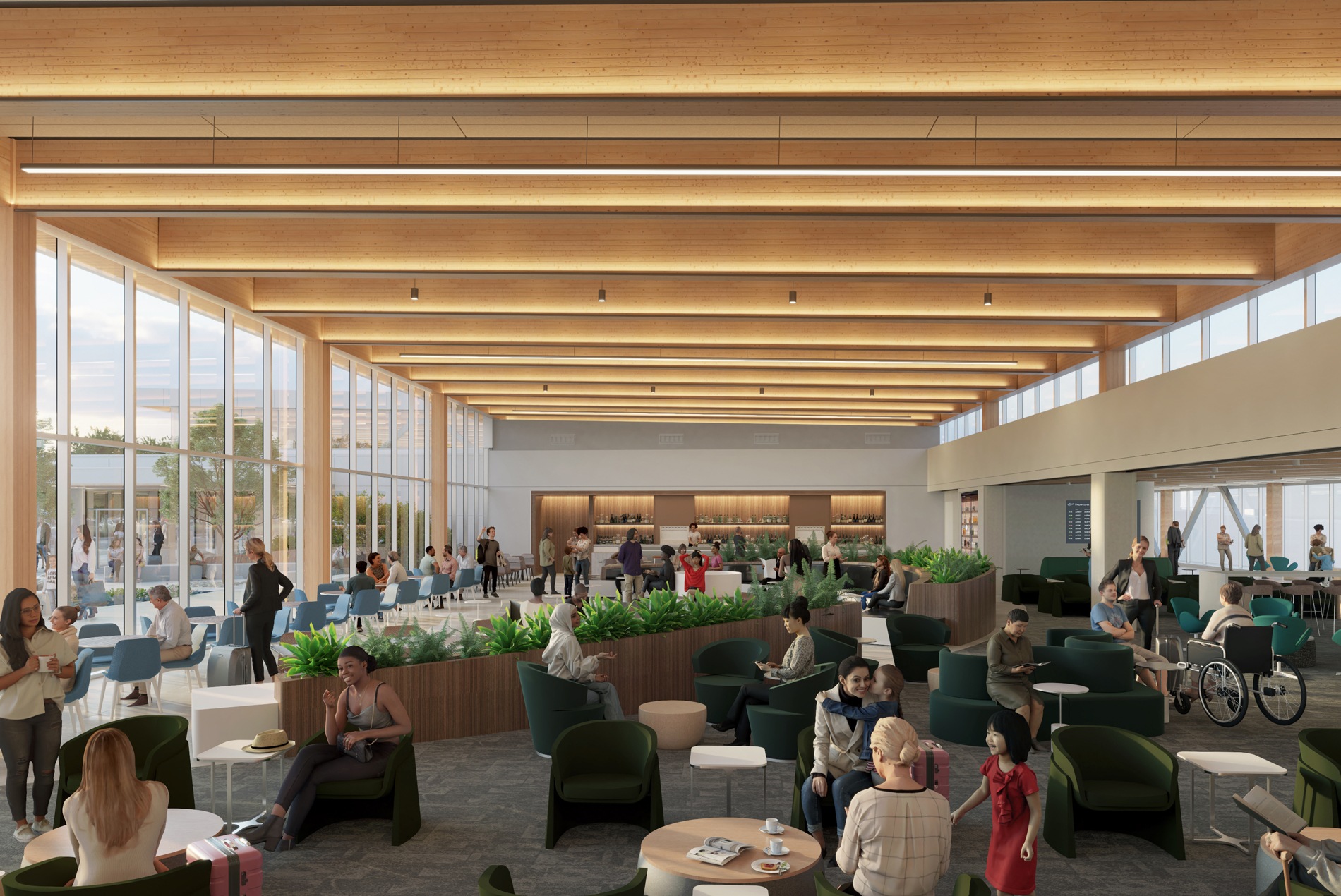
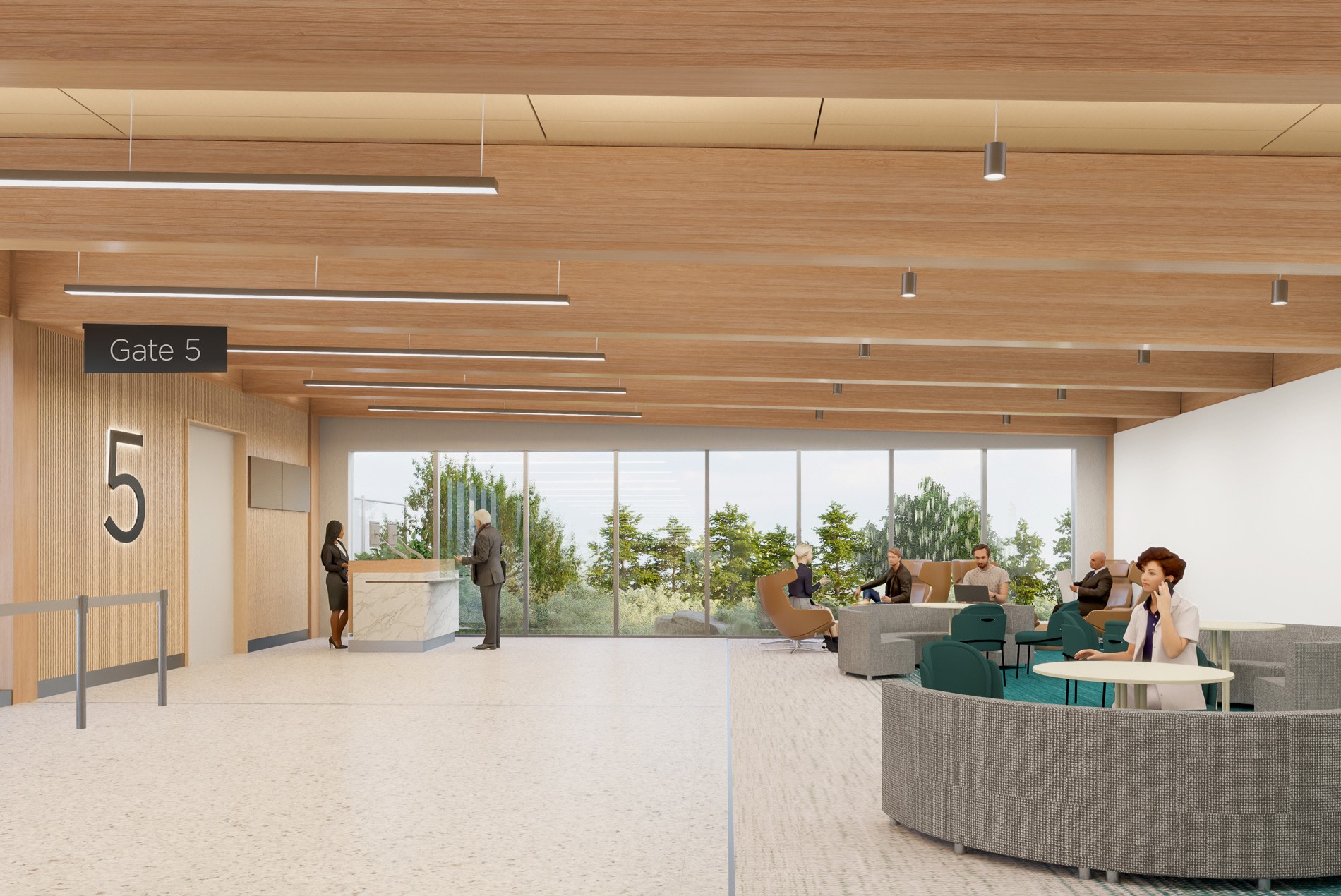
4. Scale Timber to Your Needs
It’s not all or nothing when it comes to building an airport with mass timber. You can create a beautiful, sustainable and cost-efficient hybrid structure that incorporates timber, concrete and steel to fit your project goals.
Monterey’s design shows how strategic placement of mass timber can maximize its impact. HOK prioritized mass timber in high-visibility public areas, while back-of-house spaces and perimeter areas rely on steel for the structure.

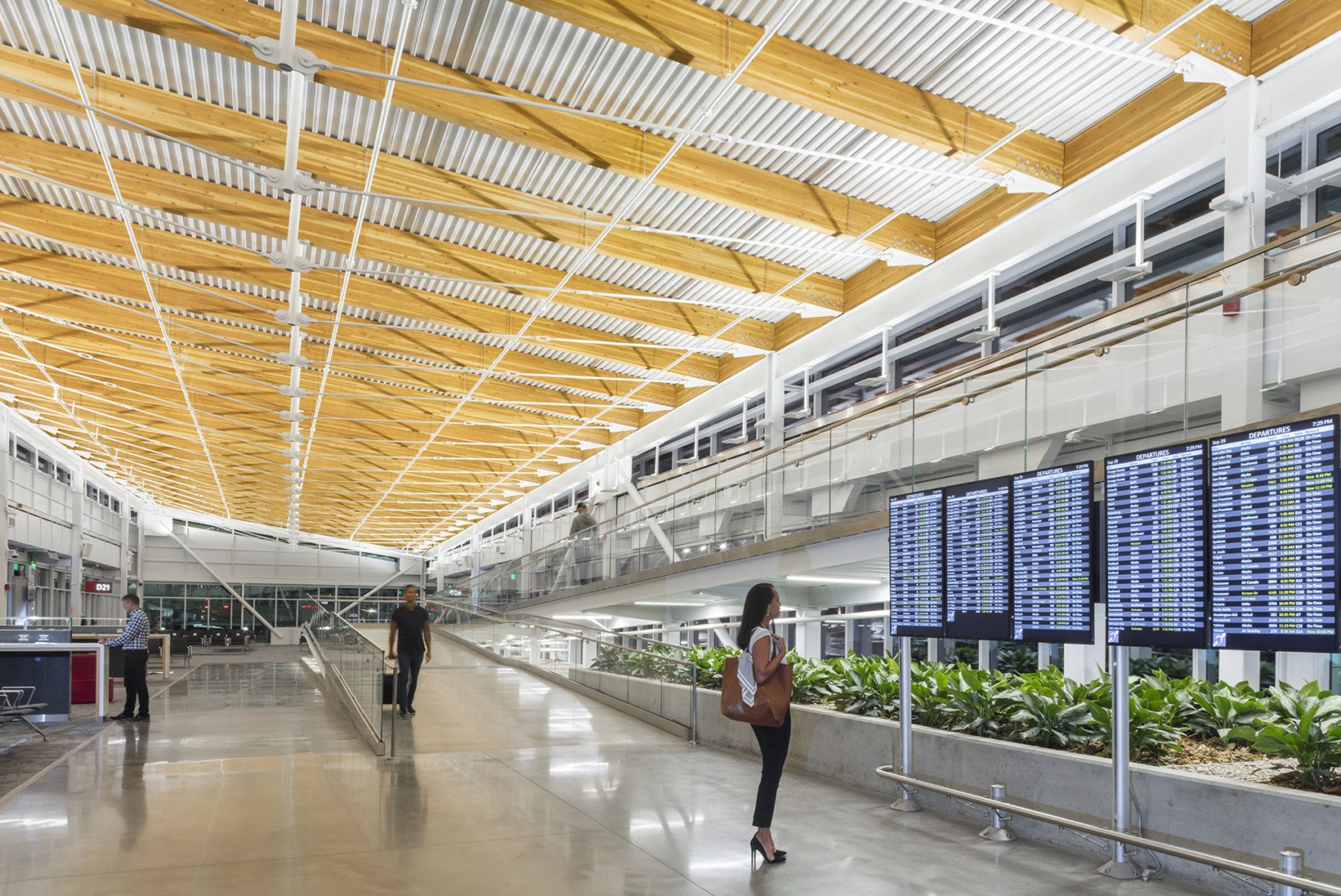
Other airports, like Seattle-Tacoma International Airport’s Concourse D Annex, use these materials differently. This HOK-designed project integrates glulam beams, sourced from local Douglas fir trees, with steel trusses to create a hybrid structural system in the building’s ceiling.
Remember that there is flexibility in how and where you use wood. You can tailor the design to find the right mix based on your project’s budget, needs and constraints, just like these different hybrid timber examples.
5. Plan for All the Hidden Systems
Airports are packed with building systems—mechanical, electrical, plumbing, fire protection, lighting, security and more. Often these systems are housed in a building’s ceiling and are either exposed to building occupants or are hidden behind a drop ceiling. What should airports do if they want high, open ceilings that create a spacious environment?
In Monterey, HOK coordinated everything early so those systems could either be tucked into walls and floors or exposed in a refined and organized manner into the exposed, open wood ceiling. The result is a cleaner, calmer and more spacious environment for travelers.
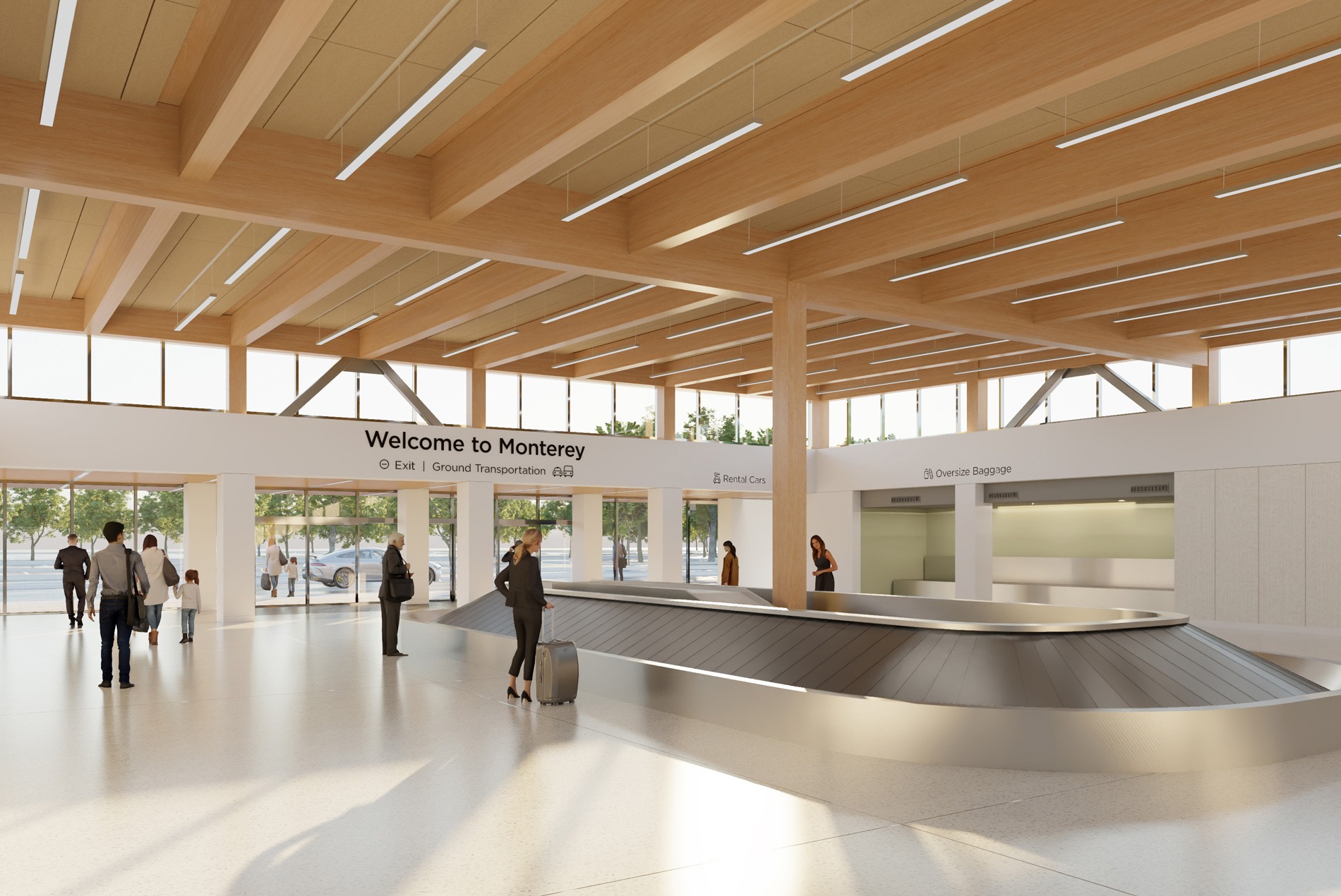
6. Get Everyone Involved Early
Mass timber projects benefit from collaboration right from the start. Early input from timber fabricators and builders can bring needed insights and streamline a project’s construction feasibility.
In Monterey, we engaged Timberlab during design to ensure our solution fit the airport’s goals and budget. Our integrated HOK team streamlined decisions across architecture, interiors, planning, sustainability, structural engineering, lighting and landscape architecture.
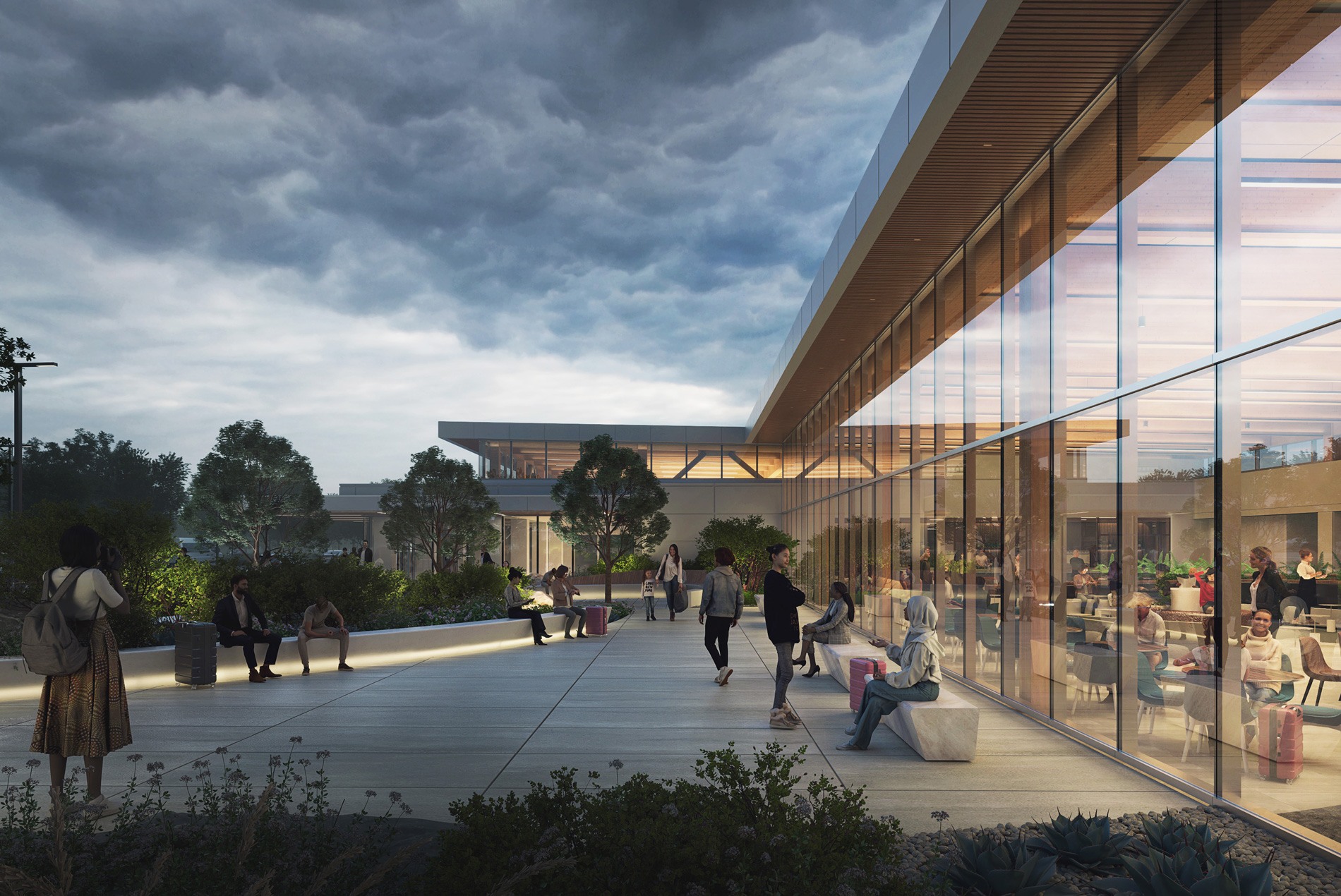
Designing for the Future of Air Travel
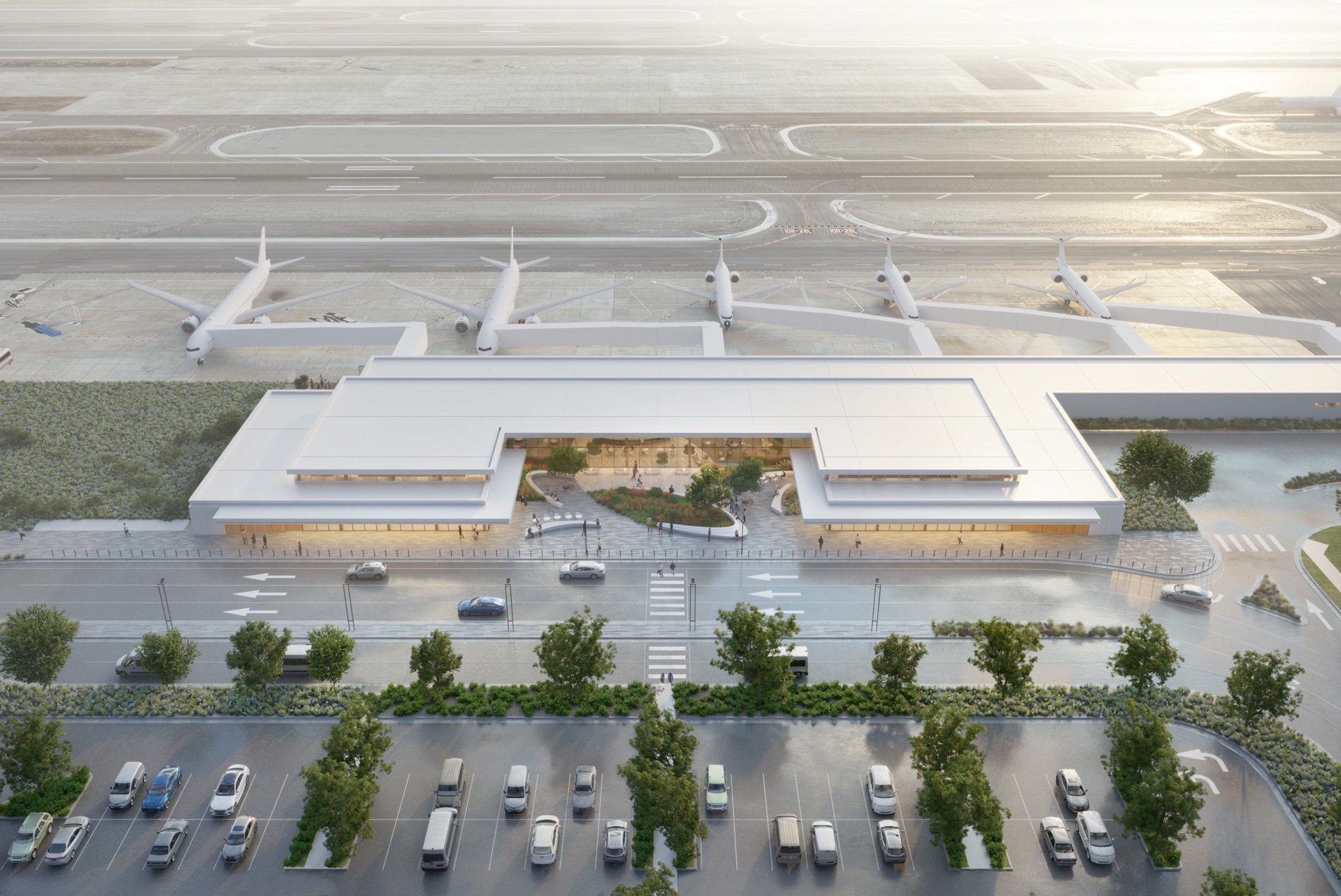
As mass timber gains momentum in airport design, Monterey Regional Airport stands out as a case study in how to do it thoughtfully. By balancing code, cost and craft, the project delivers a terminal that’s sustainable, regionally inspired and ready for the future of travel.
Want to learn more? Contact Patrick Riddle, project manager in HOK’s San Francisco studio, at patrick.riddle@hok.com.